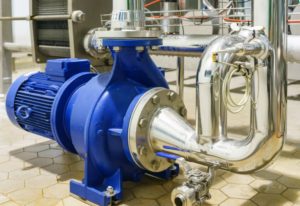Home » Industries Served » Water & Wastewater Treatment
Water and Wastewater Treatment

Web Seal provides a variety of critical sealing solutions to help protect our water supply and the environment.
Critical Need for Safe Water
Removing impurities in water treatment is an increasingly vital environmental concern as keeping our water supply pollutant-free is at the very heart of supporting life.
Sanitary water supplies must be protected for drinking and other usages but also during transport and distribution. Environment safety applies to drinking fountains, water storage tanks and reservoirs, water meters, and all individual water system components. Well-sealed treatment processes are critical for removing contaminants and undesirable components through a variety of physical, chemical, and biological processes and maintaining superior water quality.
In addition to potable water management facilities, other systems that require high-performing seals include animal feeding, aquaculture, desalination, flood control, industrial water supplies, irrigation, moveable water supplies, and water recreation.
Wastewater
 Wastewater is water that has already been contaminated from use by agricultural and food processing, commercial, domestic household, industrial, or municipal activities. Industrial sites, hydraulic fracturing, mineral extraction, offshore drilling platforms, pesticide and pharmaceutical manufacturing all produce wastewater from drainage, cooling and processing waters.
Wastewater is water that has already been contaminated from use by agricultural and food processing, commercial, domestic household, industrial, or municipal activities. Industrial sites, hydraulic fracturing, mineral extraction, offshore drilling platforms, pesticide and pharmaceutical manufacturing all produce wastewater from drainage, cooling and processing waters.
Treatment removes noxious elements, including excess manufactured liquids, acids and alkalis, from wastewater, surface water runoff, stormwater, and sewerage systems in order to safely return the water to recycled usages or the environment. Treated wastewater, or effluent, can be reused for secondary functions, which is known as water reclamation. Sites that often use treated water include aquifers, cooling towers, crop acreage, and wetlands.
Sealing solutions for both wastewater effluent and water reclamation must be carefully designed to prevent toxic leakages.
Sealing Considerations
Miles of pipe and mechanisms such as pumps, meters, and valves used in water and wastewater treatment all require seals, as well as manufacturers of faucets, ice makers, water heaters and related products.
The design of sealing solutions specifically for equipment used in hygienic water management and wastewater processing must take into account:
- types of contaminants
- high volumes of water
- varying viscosities, from free-flowing water to thick sludges
- intense abrasiveness
- variable pressures throughout treatment and piping systems
- aggressive treatment processes
- installation requirements
Seals must be able to withstand harsh chemicals and additives, including anti-foaming agents, chlorine, chloramine, coagulants, and flocculating agents. They must exhibit good insulation properties and compression set. In addition, seals must also be able to meet strict environmental criteria. Standards for drinking water treatment in the U.S. are regulated by the National Sanitation Foundation (Standard NSF/ANSI 61). The U.S. Environmental Protection Agency (EPA) also stipulates matching potable water quality requirements in its National Primary Drinking Water Regulations (40 CFR 141). Each state has a separate water quality enforcement department and the EPA posts all enforcement reports state by state.
Selecting the correct seals is not only essential for environmental protection, process safety, and service life, it can help reduce inventory and maintenance costs.
Types of Seals
Sealing and gasketing materials should be tested to ensure compatibility for any water or wastewater treatment application. Filled PTFE, an inert gasket material with additives, is a good choice for critical service applications due to its superior sealability, high resistance to chemicals and weathering, great compressive strength, and long service life. EPDM is also excellent in harsh chemical environments.
Sealing products commonly used in water and wastewater treatment applications include:
- Mechanical seals and split seals
- Bellows seals
- Custom die-cut and molded gaskets
- Full face flanges
- Couplings
- Molded seals
- O-rings
- Square rings
- Packing




